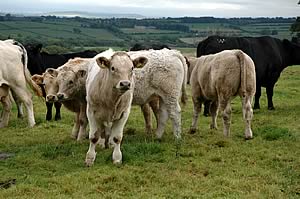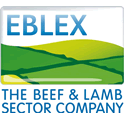 |
|||||||||
|
|||||||||||||||||||
|
|
Better Early Grass Use Offers Increased
Margins Making optimum use of grazed grass in the spring and early summer in particular offers English grass beef producers an opportunity to reduce feeding costs, improve daily gains and finish a higher proportion of stock from grass, according to the latest advice from the English Beef and Lamb Executive (EBLEX).
Comparative assessments of costed finishing businesses suggest that total feed cost savings of £25 to £40/head accompanied by improved liveweight gains together worth £30 to £60/head in improved margins - or £2800 to £4200 for a typical 70 animal/year unit - can be achieved through improved management and utilisation of grazed grass. Fresh, leafy spring grass has long been valued as one of the best and most economic sources of nutrition for finishing cattle, capable of supporting liveweight gains comfortably in excess of 1.0 kg/day and up to 2500 kg liveweight/ha. As well as missing out by not taking full advantage of this valuable resource, under-stocking early in the season can lead to a build-up of stemmy material in the sward, reducing the performance it can support later on. With grass silage costing an estimated £51/t DM compared with £32/t for grazed grass, there is little point in keeping cattle housed late in the spring in order to ensure sufficient grass for silage-making. Instead, regimes which maximise spring grazing while minimising the length of the silage-feeding winter period offer performance improvement opportunities which are well worth exploring - providing, of course, the amount of spring rainfall and ground conditions allow! EBLEX experience indicates that careful integration of conservation and grazing to take account of seasonal differences in grass growth, ground conditions and animal requirements is the most important key to making the most of grass. Specifically, it suggests the following grazing management tips found useful by producers in practice:
More detailed guidance is provided in a specialist pasture management guide produced as part of the Better Returns Action for Profit resource available at www.eblex.org.uk
|
||||||||||||||||||

|
|
||||||||||||||||||
| home | agri-services | pedigree
pen | news | dairy | beef | machinery property | organisations | site map |
|||||||||||||||||||

